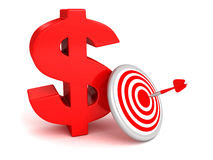
I leave today for a business trip to Tokyo, Hong Kong and Beijing over the next three weeks. Updates to the blog will be more sporadic, and with a different rhythm given the time zone. Please bear with me.
Given this is may be particularly helpful to summarize my views:
1. I remain a dollar bull on a medium and longer-term basis, but recognize that stale longs are bailing, and new momentum shorts are being established.
2. Since the disappointing US September jobs report, the news stream chopped the greenback’s underlying support. The pendulum of market sentiment has swung hard against a rate hike not only this year, but is pushing it into Q2 16. The downshift in job creation has been echoed with the disappointing retail sales data. The Beige Book also picked up some deterioration. Nine of 12 districts reported modest or moderate growth, down from 11 previously, and the language seemed more less optimistic. Two Federal Reserve Governors, Brainard and Tarullo, have come out strongly opposed to a hike this year. These are more important dissents than regional presidents, all of whom do not vote. Going forward, the views of the Fed’s leadership will be particularly important. Dudley speaks today. He had tipped investors off early that a September rate hike had become “less compelling.”
3. The central dollar bullish narrative was predicated on divergence. The divergence has two phases. The first phase is developments abroad. Many major central banks are still easing policy, most notably the Bank of Japan and the European Central Bank. There is scope for additional easing in China. Australia, New Zealand, Sweden and Norway may not have finished their easing cycles either. The second phase is the Fed raising rates.
4. The first phase is lasting longer than we had thought, but it is continuing. The ECB has already signaled that its asset purchase program is flexible. It could be extended, expanded, and/or its composition can change. It is already experimenting with changing its operations (moving toward reverse auctions rather than bidding in the market).The ECB downgraded growth and inflation forecasts, and earlier today ECB’s Nowotny noted that even core inflation is below target. He suggested that more tools may be needed. The ECB meets on October 22. We suspect that a consensus is still being forged, and while Draghi may sound dovish, the ECB may not take fresh action. If it does move, it may simply extend the current program, which had a soft end date September 2016.













Leave A Comment